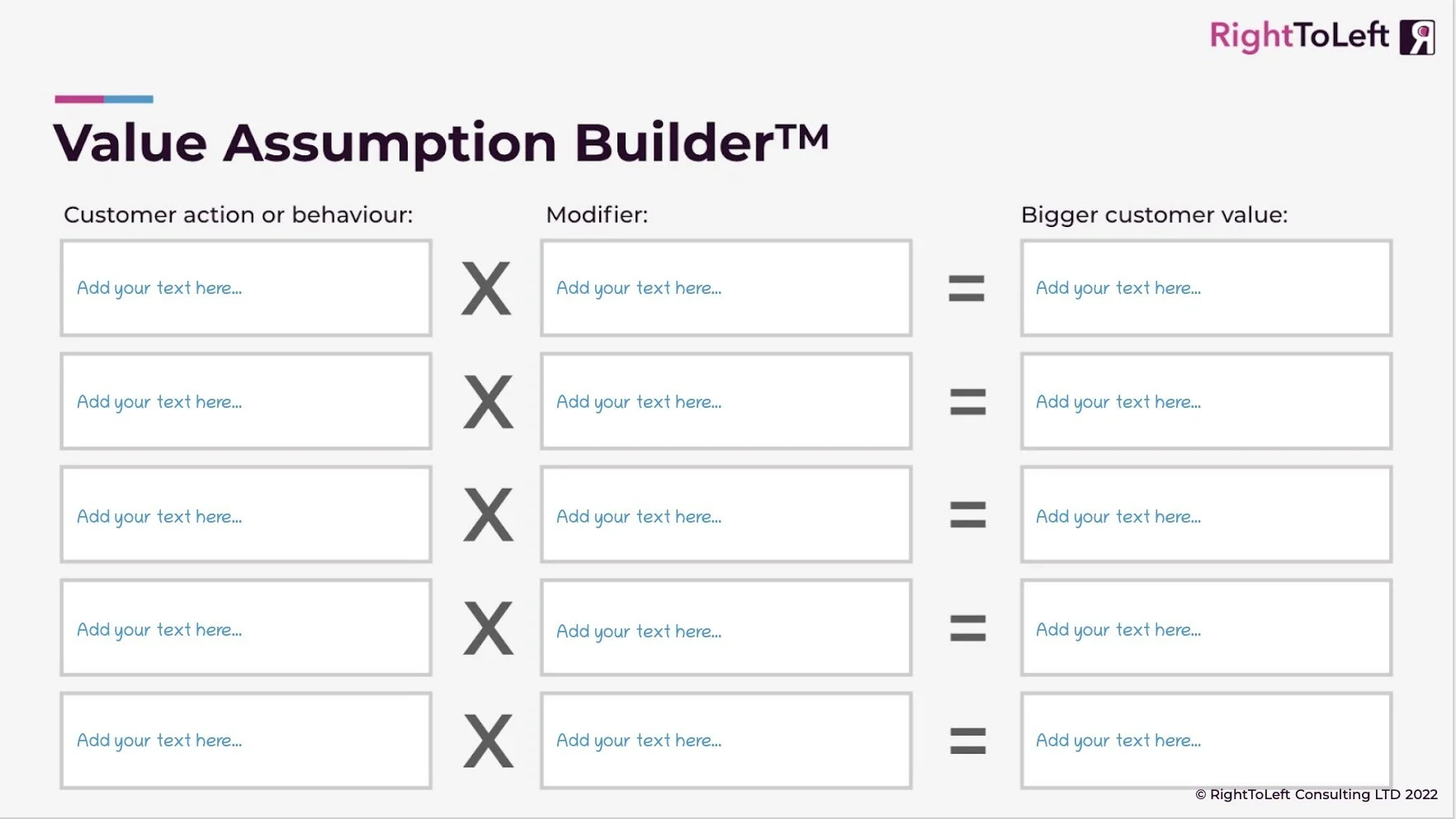How to use the Value Assumption Builder
In the previous article, we identified valuable user behaviours that impact the desired customer value. This article expands on the behaviours and defines the impact of those value assumptions.
Define how the product will directly impact value
This step is to align everyone and define how the product will create value. This will provide the backbone for the Product VCP value indicators, resulting in high operational effectiveness. The purpose is not just to identify the assumptions but to align everyone. It is important not to have this completed as a solo activity. You must collaborate and refine.
Using the Value Assumption Builder
The starting point is to list all the user behaviours you identified in the Customer Value Explorer that interest you. At this stage, we won't worry about prioritising them, and it doesn't matter if they are too granular.
For each user, behaviour defines explicitly how it needs to be modified to create a bigger customer value. You can capture this in the template below. Use one line for each combination of customer behaviour and modifier.
After socialising and refining the list, the next step is consolidating or aggregating it to a higher level. This is effectively merging related items together and rewording to create a higher-level value assumption.
Finally, with a shorter list, you can prioritise down to max five items. If five feels too difficult, then consolidate further, making it an even higher level.
Hungry for more?
The next article in this series examines how you will measure progress using the Value Indicator Chooser.


